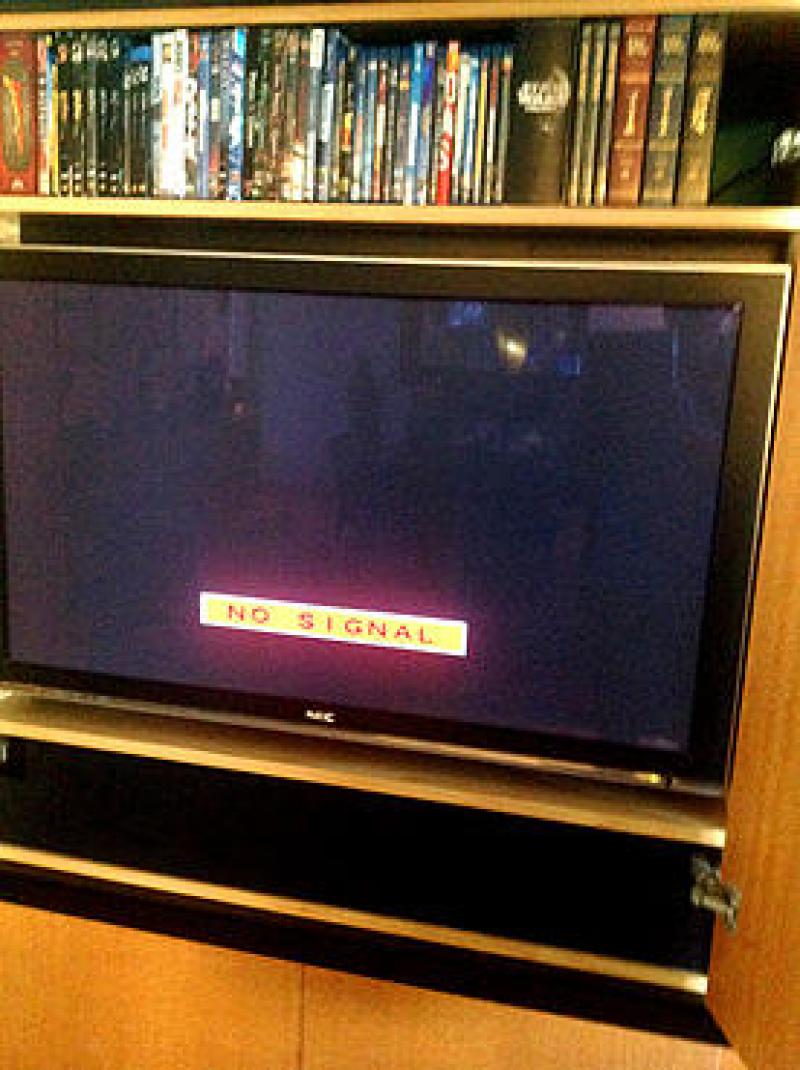Perhaps you've seen this rather curious but dreaded message displayed on your beautiful HDTV display? What in the world is going on, you ask?
Well, the long and short of it revolves around an "undocumented feature" of the HDMI Protocol. Part of the HDMI ecosystem is the embedded capability for bi-directional communication between the connected equipment. HDMI includes three basic types of devices....
* Sending Devices (STB's)
* Receiving Devices (TV Displays)
* Repeating Devices (AV Receivers)
All of the aforementioned devices must communicate with one another to eastablish an "onscreen" picture. This communication requirement (Handshake) happens whenever the initial turn on command is fired. The "sending device" (CATV, Sat Box, Blu-Ray) sends its credentials to the "receiving device", which is then parsed by the Display. Assuming the Display successfully recogonizes the sending device, you "auto-magically" get a beautiful picture on your HDTV. This handshake, however, must be maintained throughout the entire program broadcast. If at any time, during the playback, the communication link is broken, the picture goes missing and you get the dreaded "Searching for Signal" or "No Signal" message nicely displayed on your beautiful HDTV screen.
So what happened? What possibly went wrong?
The Searching for Signal notice is intended to be a prompt to notify the viewer that:
*The sending device is actually not ON
*The AV Receiver is not ON
*The Selected HDMI Input, on the TV Display, is incorrect
*The selected HDMI Input, on the AVR, is incorrect
Clearly, if you are attempting to watch your Sat or CATV STB, which is connected at HDMI Input #1, on yout TV Display and your Display is set to HDMI 2, 3 or 4, you most definitely will get the aforementioned message. Alternately, if the STB signal passes through an AVR (for Surround sound Processing) and the AVR is set to the wrong HDMI Input, you will also get this message.
A simple analogy might help to better explain this concept. Suppose you own two fine automobiles. The first is a brand new BMW M4 rocketship and the 2nd is an AMG 6.3 Bi-Turbo 12 cylinder sedan. Both great auto examples to be sure. However, If you grap the keys to the BMW and mistakenly jump into the Mercedes, don't be surprised to learn that, like the famous Bob Dylan song, "you ain't going nowhere", dude!
So, it is encumbent on each of us to insure that not only is the TV, STB and AVR actually in an "On State" but they are actually set to the proper HDMI Input. Failing this, you'd be in a world of hurt.
Now for some real AV fun and games. What do you suppose happens when you hide all of your AV equipment behind a cabinet door or perhaps in another remote location? Firstly, it is impossible to know what component(s) are actually On or Off and if they are set to the proper/required HDMI Inputs. Unless you are Clark Kent, that is. Clearly, having the latest and greatest Home Theater setup is highly desirable but it does present some design and implementation challenges.
We find that most consumers don't want to be bothered by all of this minutia, which is entirely understandable.
Solution:
Deploy a quality and well executed Programmable Remote Control. Moreover, those with bi-directional communication capabilities are the preferred option.
More on remote controls in a future Blog-r-ation.
Stay tuned.
The Supreme Steremeister











